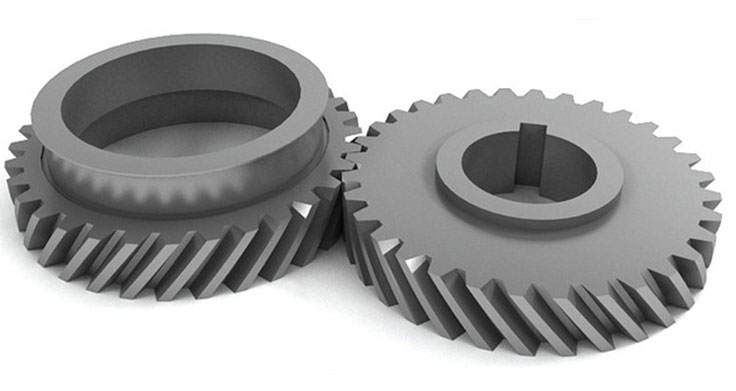
Helical gear lubrication is of utmost importance to ensure smooth and efficient gear operation, prevent wear, reduce friction, and extend the gear’s lifespan. Proper lubrication also helps dissipate heat generated during gear meshing, reducing the risk of premature failure. Here are some key reasons why lubrication is crucial for helical gears and best practices for ensuring effective lubrication:
Importance of Lubrication for Helical Gears:
- Reduces Friction and Wear: Lubrication forms a thin film between gear teeth, reducing friction and preventing metal-to-metal contact that can cause wear and damage.
- Dissipates Heat: During gear meshing, some heat is generated due to sliding friction. Lubrication helps dissipate this heat, preventing excessive temperature rise and potential thermal damage.
- Improves Efficiency: Proper lubrication minimizes energy losses due to friction, enhancing the overall efficiency of the gear system.
- Noise Reduction: Adequate lubrication can contribute to quieter gear operation by reducing noise generated during gear meshing.
- Corrosion Prevention: Lubricants with anti-corrosion additives protect gear surfaces from rust and corrosion.
- Contaminant Control: Lubrication helps flush away contaminants and particles that may enter the gear system, reducing the risk of abrasive wear.
Best Practices for Helical Gear Lubrication:
- Use Appropriate Lubricant: Select a lubricant specifically designed for helical gears and the application’s operating conditions. The lubricant should have good load-carrying capacity, anti-wear properties, and thermal stability.
- Consider Viscosity: Choose the appropriate viscosity grade of the lubricant based on the operating temperature and speed of the gear system. The viscosity should be sufficient to form a protective film but not too high to cause excessive drag.
- Regular Lubrication Maintenance: Follow the manufacturer’s recommendations for lubrication intervals and ensure regular lubrication maintenance. Monitor oil condition and change it if it becomes contaminated or degraded.
- Proper Lubricant Application: Ensure proper lubricant application to cover all gear teeth adequately. Some gearboxes have splash lubrication, while others require the use of lubrication systems with pumps.
- Filtering and Cleanliness: Keep the lubricant clean and free from contaminants. Use effective filtration systems to remove particles and debris from the lubricant.
- Lubricant Analysis: Periodically perform lubricant analysis to check for signs of degradation, contamination, or abnormal wear. This can help identify potential issues early on and take corrective measures.
- Consider Lubrication Additives: In some cases, adding anti-wear, extreme pressure (EP), or anti-foaming additives to the lubricant can enhance its performance and protection.
- Temperature Control: Maintain proper temperature control in the gear system to prevent overheating and ensure the lubricant’s stability.
- Gearbox Design: Consider the lubrication requirements during gearbox design. Proper sealing and drainage systems can help retain the lubricant and prevent leaks.
- Operator Training: Educate operators on the importance of proper lubrication and maintenance procedures to ensure adherence to best practices.
In conclusion, proper lubrication is essential for the reliable performance and longevity of helical gears. Following best practices for lubrication, including using the right lubricant, maintaining cleanliness, and regular maintenance, ensures optimal gear operation and reduces the risk of gear failure and downtime.
